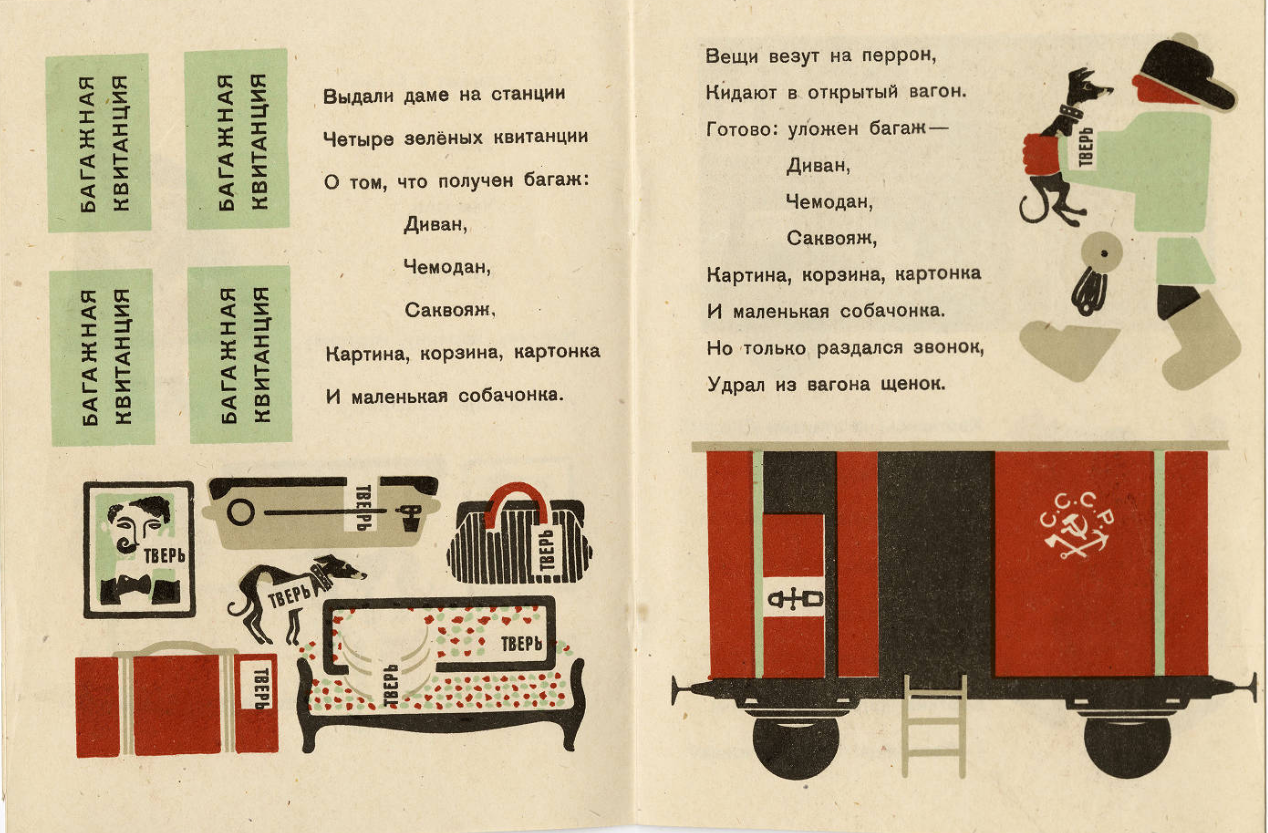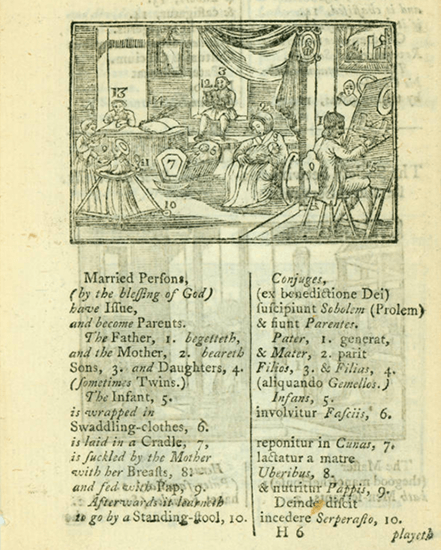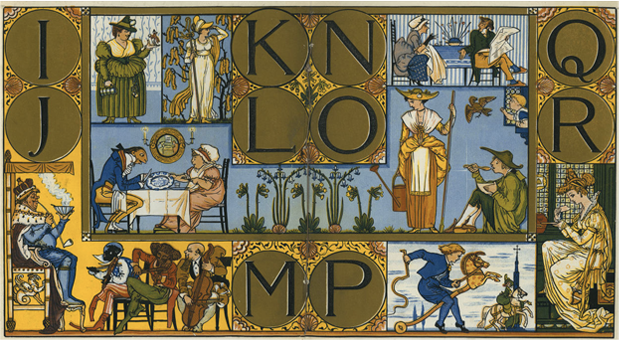"If . . . Æsop has pictures in it, it will entertain [children] much the better, and encourage [them] to read, . . . ideas being not to be had from sounds, but from the things themselves or their pictures" (John Locke, Some Thoughts Concerning Education, 1693, 212
"Look how avid children are for illustrated books. They are prepared to read the driest and most boring text, if it explains to them the content of a picture" (Vissarion Belinsky, quoted in Hellman 2013, 74).
Word and Image in the Children's Book

Because childhood itself is notoriously difficult to define, its boundaries and characteristics shifting over the centuries, an unambiguous definition of children's literature also eludes our grasp. "Nobody is quite sure what children's literature is, and therefore constructing its history is a contentious business," Peter Hunt usefully points out, noting that children's literature often reflects an idealized version of how adults wish to view themselves: "These books give us a remarkable picture of how society wished itself to be . . . and thus, often inadvertently, give us a picture of how it actually was" (1995, ix & xi). Meanwhile, children's literature has frequently swung between two poles: viewed as a vehicle for either entertainment or didacticism, it engenders passionate arguments regarding the role of the word and image in a child's life. Although often depicted as a clear progression from didacticism to entertainment, the history of children's literature, in fact, has swerved unevenly between these realms, and this is particularly true when one broadens one's perspective to include the context of Russia and Eastern Europe.
There is a further tension between the role of words and images in the children's book. As picture-book theorists have argued, the relationship between text and image can be ironic or disjunctive, symmetrical or contrapuntal, and this interplay is often the source of the pleasure in reading a picture book (see Nikolajeva & Scott 2001, 1–12; Weld 2018, 21–23). The reader—usually a child—repeatedly returns to the details of the words and illustrations, each time discovering new meaning in their intertwined relation. "If we look carefully, in fact, the words in picture books always tell us that things are not merely as they appear in the pictures, and the pictures always show us that events are not exactly as the words describe them. Picture books are inherently ironic, therefore: a key pleasure they offer is a perception of the differences in the information offered by pictures and texts" (Nodelman 2005, 137). Weld argues that the picture book "uniquely combines image and text into a complex signifying whole, . . . where the interplay of word and image . . . are on truly equal footing . . . [It] 'functions as a sequential visual narrative, a literary work, a mediating object, and a tangible material artifact'" (Weld 2018, 21–23; with quote by op de Beeck).
One could argue that not only the illustrations, but also the physicality of the book itself—the weight of its pages, however tattered, and the texture of its cover, however stained or warped—often hold the highest place in a child's memory. Lerer notes that the history of children's literature is "a history, too, of artifacts: of books as valued things, crafted and held" (2008, 322). In its tangible materiality, the picture book entices the reader/viewer with its bipartite dance of word and image, which conveys information that is both different and the same, both complementary and contradictory, thus creating "a whole from the component parts—but without those parts ever actually blended into one" (Nodelman 1988, 21). In this exhibit we will pay particular attention to that dual history of word and image, and the ways in which they mirror and contradict each other when they join forces in the robust medium of the picture book.
Pioneers of Illustrated Children's Books in Russia and Western Europe: The Seventeenth and Eighteenth Centuries

Looking for an origin story for illustrated children's literature is almost like a treasure hunt—some scholars view the fifteenth-century versions of Aesop's Fables as the earliest illustrated books for children, although they were not exclusively aimed at a young audience. However, the notion of the illustrated children's book emerged more definitively in the seventeenth century, with the publication of The Visible World in Pictures (Orbis sensualium pictus, 1658), a Latin textbook that also served as an innovative, illustrated encyclopedia, and is often credited as the first picture book for children. Created by Comenius (also known as Jan Amos Komensky, 1592–1670), a Czech bishop in the Bohemian Brethren, this work pioneered the notion of teaching through images of concrete objects instead of abstract concepts, and exerted an enormous influence on subsequent children's books in Europe (Carpenter & Prichard 1999, 388; Hürlimann 1967, 127–36; Nodelman 1988, 2).
Echoing Comenius's approach just a few decades later, John Locke (1632–1704) declared that books should be illustrated to encourage children to read: "ideas being not to be had from sounds, but from the things themselves or their pictures" (1693, 212). To emphasize this notion, Locke edited an illustrated edition of Aesop's Fables (1703), in which he foregrounded the visual appearance of the animals rather than the narratives (Lerer 2008, 111–13).
In Russia in the same decade, Karion Istomin (c. 1640s–c. 1717), a tutor at the Russian royal court, produced one of the earliest illustrated Russian children's books: Illustrated Primer (Litsevoi bukvar', c. 1694; also known as the Great Primer), which included an elaborately designed picture for each letter of the alphabet. Many scholars single out Karion Istomin as the first significant Russian writer of children's literature, because his works demonstrate playfulness and empathy for the child's perspective (Hellman 2013, 1–2; Voskoboinikov 2014, 14–15; Rosenfeld 2014, 168).
Further groundwork for the Russian illustrated children's book was laid by the pioneering eighteenth-century figure Nikolai Novikov (1744–1818), who founded the first Russian children's journal, Children's Literature for the Heart and Mind (Detskoe chtenie dlia serdtsa i razuma, 1785–89), and published several children's books throughout the 1780s. Novikov was "the first in Russia to recognize children as a separate public" (Lemmens & Stommels 2009, 40), and in this Novikov embodied the spirit of his age, influenced by Rousseau's ideas regarding the importance of childhood and education. His legacy to the children's picture book lies in his particular emphasis on the role of illustration, including "exquisite vignettes, frontispieces, and tailpieces," as well as illustrations of the "highest quality" (Rosenfeld 2014, 170).
The Golden Age and Lithography: The Nineteenth Century

John Newbery (1713–67) is often credited for founding the first English publishing house to emphasize visually appealing literature for children and to advocate Lockean ideals of play, but many argue that "the first masterpiece of children's book illustration" arrived a few generations later, embodied by George Cruikshank's illustrations for the English translation of Grimm's Fairytales (German Popular Stories, 1823), which laid "the cornerstone for the 'Golden Age' of children's book illustration" (Hearn 1996, 7; T. Clark 1996, 57). In its wake, innovations in printing techniques, including chromolithography, revolutionized the illustrated children's book by the mid-nineteenth century. The master in nineteenth-century printing techniques was the renowned English printer Edmund Evans (1826–1905), who helped perfect mechanical color printing and emphasized the importance of both illustration and overall book design. Around 1865 Evans began his renowned collaboration with Walter Crane (1845–1915), who became one of the most eminent children's book designers of his time (T. Clark 1996, 57; Briggs & Butts 1995, 164; Carpenter & Prichard 1999, 170 & 537).
Crane pioneered the notion of the book itself as a work of art, and greatly influenced Russian book design. Like other artists in this era of Japonisme, Crane was inspired by Japanese woodblock prints, which he praised for their "strong outlines, and flat tints and solid blacks" (1896, 156–58). He argued that "book illustration should be something more than a collection of accidental sketches" and that "the idea of the book itself" should always be taken into account when designing any of its parts (217). In The Baby's Bouquet (1878), for which he designed and decorated every element including the front matter and end papers, Crane achieved this vision of the book as a work of art in itself: "Here finally was the modern artistic picture book, and every illustrator in the field owes much to Crane's legacy" (Hearn 1996, 11). Randolph Caldecott and Kate Greenaway, the two other renowned illustrators of this era who also worked with Evans, brought a different sensibility to their craft. Their books exude nostalgia for an elusive past, especially the eighteenth century (Lerer 2008, 325; Hearn 1996, 13). In this they are strikingly similar to the sensibility of the Mir Iskusstva (World of Art) movement in Russia, especially as embodied by the work of Alexandre Benois, as will be seen in the next essay.
In Russia, as in the West, the advent of lithography transformed the illustrated children's book. "In the 1830s, the costly, labor-intensive metal-engraving technique was gradually replaced by lithography and wood engraving—a shift that marked the emergence of book illustrations created specifically for children. Paralleling this shift, the proportion of children's books by Russian authors [in relation to foreign authors] at this time rose to thirty-seven percent" (Rosenfeld 2014, 170). But the true revolution in Russian children's book design came with the next wave of artistic movements, with the arrival of the Neo-Russian style and the folk art movements at Abramtsevo and elsewhere, which helped pave the way for Russian Art Nouveau.
